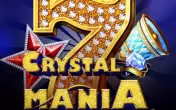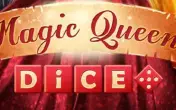_770.webp)
What Is Spanish Blackjack?
We would like to remind you that Spanish 21 is a variant of blackjack that is quite popular in certain countries. Sometimes it is called Spanish Blackjack.
The main feature of this game is that it is played with Spanish decks consisting of forty-eight cards (without four tens).
Since the absence of tens significantly increases the house edge, additional bonus payouts are provided for 777, 678, and other combinations. The rules are also more advantageous for players.
Card Counting in Spanish 21
It makes Spanish 21 more profitable for casino visitors than most other blackjack variations. However, how may such rules affect card counting? Does it make sense for counters to sit at the Spanish 21 table? Or is it better to play more traditional versions of blackjack?
Bonus payouts for hands of sixes, sevens, and eights significantly increase the value of these cards in Spanish 21 compared to classic blackjack.
On the other hand, it does not have valuable tens. It may seem that such redistribution makes card counting inefficient or even useless. Yet, such changes even contribute to card counting. For the reasons discussed below, Spanish 21 is more profitable for card counters than traditional blackjack.
- An ace seems to be the most beneficial card. Since there are no tens, it appears more often than in traditional blackjack (1/12 compared with 1/13).
- In Spanish 21, it is allowed to re-split aces and hit more than one card after splitting aces, making an ace even more favorable for players.
- Blackjack is paid 3:2 even if the dealer also has blackjack (due to higher values of aces).
- Card counters make doubles more often than the basic strategy recommends if the score reaches high levels. Since in Spanish 21, it is allowed to double on any number of cards and points, it is very profitable for players to count cards under favorable circumstances.
- In both versions of blackjack, players often receive two-card hands that, after hitting, may form twenty-one. The basic strategy recommends standing on a 13-17 against a dealer's 2, 3, 4, 5, or 6, and on a 12 if the dealer has a 4, 5, or 6. When the score increases, the player has virtually no choice for their further action. Examining the Spanish 21 optimal strategy reveals a higher number of options available in this game. This fact is favorable to counters.
- Many casinos don't treat Spanish 21 as a game suitable for card counting, so gamblers may efficiently operate with bets without being afraid that these establishments may suspect them of card counting. In other words, there is no need to hide their activities, which is obligatory for counters in traditional blackjack.
You can play the following blackjack games for free on Casinoz.
| Name | Soft | Return to player | ||
|
|
99.78% | |||
|
|
99.71% | |||
|
|
99.7% | |||
|
|
99.69% | |||
|
|
99.65% | |||
|
|
99.6% | |||
|
|
99.59% | |||
|
|
99.54% | |||
|
|
99.54% | |||
|
|
99.54% |
Where to Play Spanish 21?
Many Casinoz readers may struggle to find this gambling game in real casinos. Still, it is widely available in many online casinos, as several well-known software manufacturers have released online versions.
Just remember that card counting in online blackjack is almost always meaningless!
Conclusion
As you can see, Spanish 21 provides card counters with a much broader opportunity to test their skills and increases their chances of winning. Additionally, this game does not exclude the use of alternative skills, such as shuffle tracking and sequencing.































